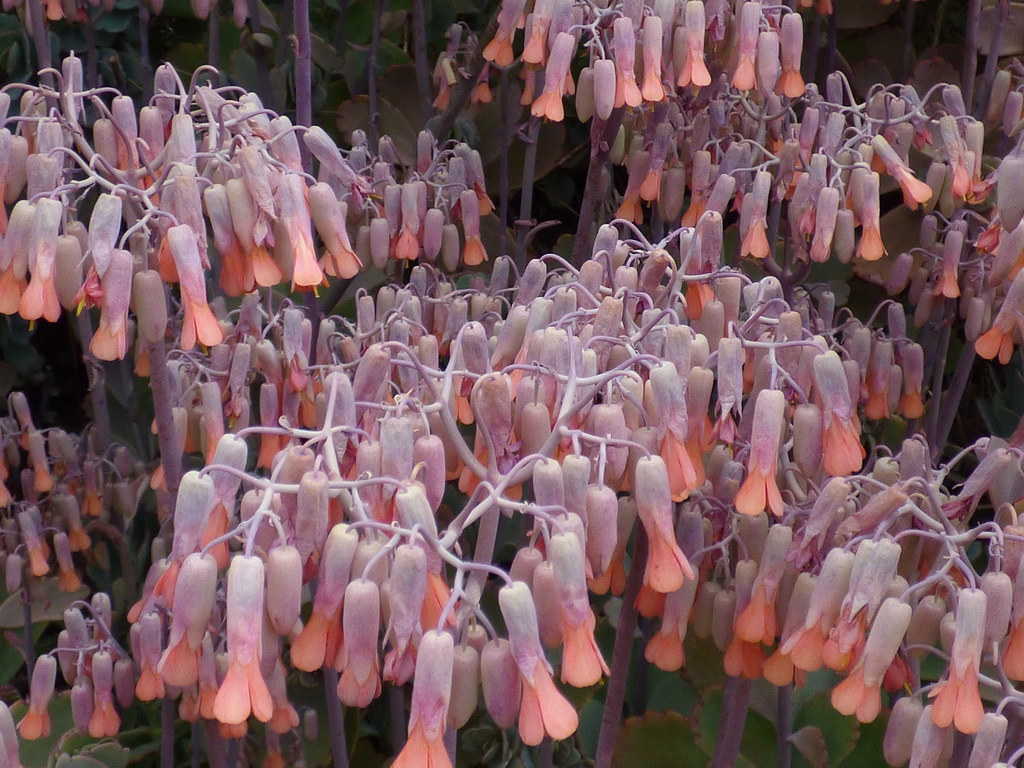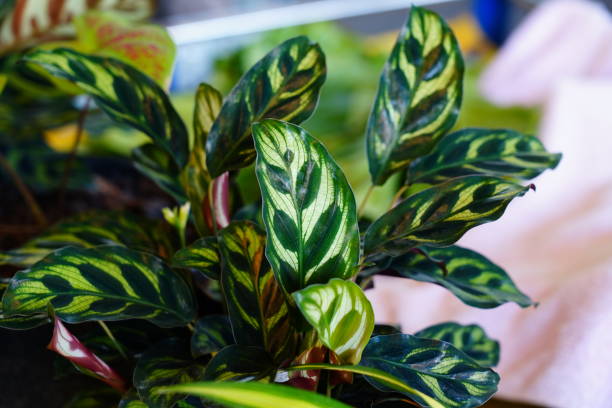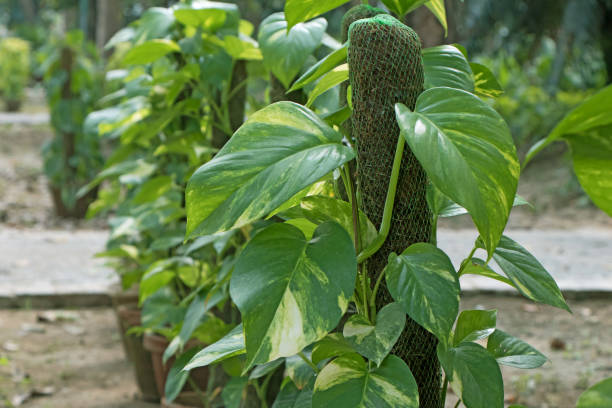Lavender Scallops: A Complete Guide To Growing The Exotic Beauty

Do you want to add something mesmerizing to your garden? Or do you want something unique as indoor plants? Well, then getting a Lavender scallops plant is what you will surely love.
Lavender scallops can be the perfect indoor house plant as it is a low light needing succulent. The good thing about it is that it has compact foliage and mesmerizingly beautiful flowers. This plant is native to the Madagascar area and belongs to the Crassulaceae plants’ family and the genus bryophyllum. The good thing is that it is an easy-to-grow houseplant that you can get for making an excellent ground cover.
So, to make it even easier for you to grow this mesmerizing beauty, we have prepared a guide for you in the article below. We will tell you all the aspects of this plant, including its common names, suitable temperatures, and more.
Common Names For Scallops
Before we move on to the caring and growing tips of this succulent, let me tell you some of its common names.
Other than lavender scallops, it is also known by the following names:
- Kalanchoe stonecrop
- Gray sedum
- South America air plant
- Variegated lavender scallops.
Lavender Scallops Care
Now let’s move on to our lavender care and growth tips.
Size
The lavender scallops are succulent which go up to a height of 1 to 2 feet. It has a stem that spreads out along the ground from the roots. This led to the formation of the colonies of its succulent leaves. The leaves of this plant are blue-green in color and have scalloped leaves with variegation of cream color.
What’s even amazing is that if the plant is under bright sunlight, then its leaves’ edges will turn pink. This change of color also occurs if it is in drought conditions. The plant has bluish-green fleshy foliage, which is often dark at the center while trimmed with lavender. The size of these plants may reach up to 2 inches. Its leaves also feature 8 teeth-like structures on the edges.
The roots of the scallops are also bendable and smooth, and when they reach the ground, they again take toots. This may lead to the growth of new plants in your garden. Such features of this plant also make it a great option if you want some hanging plants.
Fragrance and Flowering
During the summer and late spring season, this plant produces bell-shaped flowers on the stems, which are appealing to the onlookers.
The flowers of this plant loosely hang on the stems of the lavender scallops. This cluster of lavender flowers is mostly reddish-brown in color and can reach a size of 3 to 4 inches. Each of its flowers has a slight long corolla along with a short calyx.
Temperature and Light
The lavender scallops are a winter-hardy plant and are suitable for the 9b or warmer areas of the USDA zones.
If you live outside of these USDA zones, then growing it as indoor plants can be more suitable. This will also help this plant in good growth as it can tolerate low light conditions. The good thing about this plant is that it can also tolerate low-temperature conditions for a short while. In case the temperatures in your area regularly go below the -4 degree celsius, then bring the plant in, or it will die.
The good thing about this plant is that it can tolerate low light conditions but provide it with bright light for optimum results and better foliage. So if you are growing this plant as an indoor plant, keeping it near a west-facing or south-facing window can be the best option.
Feeding and Watering
This plant is a low maintenance plant and doesn’t require frequent watering. You must also be careful not to over-water it. For the best results, follow these steps for watering it:
- You should allow the soil to dry between your watering spells for the plant.
- In the winter seasons, you must stop feeding this plant.
- Proper feeding of this plant will help you to have better, healthier, and thicker growth.
- If you are still confused about the watering, then you must wait for the plant to shrivel before watering it again.
Fertilizers
When it comes to feeding it with the nutrition, then you should feed it bi-weekly. For the best results, you should use a liquid fertilizer with this succulent plant. You will also be needing to feed this plant all through the summer season using liquid fertilizer for a proper nutrition supply.
Transplanting and Soil
For the best foliage and results, you must use the porous soil for the lavender scallops. The soil you use should provide the plant with proper and quick drainage so that you can prevent overwatering. This is essential as the over-watering of this plant may lead to the growth of the mold in the plant.
If you use the regular soil to make it more porous and provide good drainage, add some perlite or sand with it.
Transplanting
This succulent plant requires transplanting after every few years. Transplanting on a regular basis for this plant will allow you to replace the old soil. It will also allow you to move your plant to a larger pot if you feel that the older one is getting smaller for it.
When transplanting, one thing to know is that use caution with the leaves, especially or you may damage them. This is essential as the leaves of this plant are slightly brittle and thus may snap if you don’t handle them with care.
Grooming
Do you like to groom your plant to make them look their best? If yes, then you got lucky as this is a compact succulent. This means that it doesn’t require any grooming on a regular basis as it will barely exceed the size of 2 feet.
Propagation Of Lavender Scallops
Do you feel propagation of any plant is hard? If yes, then you are not wrong in the case of most of the plants. But with scallops, you got lucky as it is one of the easiest to propagate plants. You can propagate this plant by:
- Cuttings
- Using the plantlets which grow along the margins of leafs
- Seeds
- Division
In case you have grown this amazing exotic beauty in the ground, then the stems may take root. This will lead to the formation of new plants, and thus you can also use them.
If you want to propagate by using leaf-cutting or division, then you will need to prepare a small pot. In this pot, prepare the cactus mix, or you can also add some sand along with potting soil for achieving consistency. When you divide the plant, separate it at the base but use caution, or you may damage the leaves of it.
Once you have divided the plant, you need to allow it for drying overnight before placing it in the new home. In case you are using the cutting for propagation, then cut the leaf at the place where it attaches to the stem. After you have done it, place the cutting into the soil.
One thing to remember is that it doesn’t require any rooting hormone. It generally takes root on its own within weeks of placing it in the soil.
Using Seeds
In case you are using the seeds for propagation, then first, you will need to collect seeds from the flowers of the lavender scallops. For the collection of the seeds, wait for them to be fully bloomed and then pick them. After that, let the flower dry and retrieve the seeds by separating the debris from it.
Once you retrieve the seeds, you will need to put them into the potting soil or mix cactus and potting soil. If you are using another kind of soil, you can use sand with that soil for proper drainage. Once you do it, don’t water the plant again before you see the seedlings. Once the seedlings appear, wait for some months for them to be hardy enough to be planted into a container.
Disease or Pest
Are you worried about houseplant pests that may harm your exotic beauty? Well, you don’t need to be, as this plant doesn’t suffer from too many threats when it comes to disease and pests. However, these plants may attract scale insects and mealybugs occasionally.
For treatment of such houseplant pests, you can remove them by picking or using sprays of water. In case the infestation on your plant grows, treat them using insecticides.
Toxicity
Another thing to look out for with lavender scallops is that they may be toxic to pets. It can also cause irritation to humans if ingested. So keep it away from your beloved four-legged friends and children.
These are some caring and growing tips for the lavender scallops which will help you to grow and propagate this mesmerizing succulent. The good thing about this house plant is that it doesn’t require much care and is easy to grow.
Final Words
The lavender scallops are one of the most attractive exotic house plants which you can get for your home.
What’s amazing about the lavender scallops is that it is easy to grow, care and propagate. This makes it one of the most low maintenance needing plants that you can grow to add something unique to your garden.






